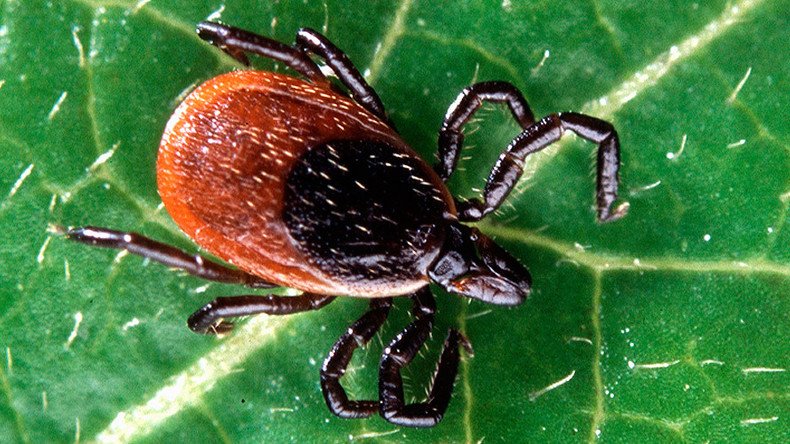Ticks that carry Lyme disease now in 45% of US counties

Ticks that spread the deadly Lyme disease live in about half of all US counties, the Journal of Medical Entomology reports. The geographical reach of the bloodsucking arachnid parasites “has changed substantially” since the last study 18 years ago.
“This study shows that the distribution of Lyme disease vectors has changed substantially over the last nearly two decades and highlights areas where risk for human exposure to ticks has changed during that time,” Dr. Rebecca Eisen, research biologist with the Centers for Disease Control and Prevention, and lead researcher in the study, said in a press release.
#BreakingtheSet: Why the Govt is Suppressing the Lyme Disease Epidemic | @lorraine_lbj Interview [VIDEO] http://t.co/ZyAx9QotfR@AbbyMartin
— RT America (@RT_America) November 21, 2014Most of the expansion was from a common type of tick known as a deer tick, bear tick, or black-legged tick. In 1998, it inhabited about 30 percent of all counties, but now has extended its coverage to 45 percent of all counties. The actual number of counties the black-legged tick has been spotted in has doubled.
Cases of Lyme disease, which brings fever and headache and eventually can harm the heart, brain, and spine before causing death, have increased 320 percent in the northeastern United States where the black-legged tick has traveled.
Reforestation and an increasing deer population are the primary reasons given for the uptick, according to the Journal of Medical Entomology report. Other factors favoring tick expansion are warming climates and rain, though vast plains are effective bulwarks against further spread. The bug’s bite is responsible for about 300,000 Lyme disease cases each year.
Sharing germs? #Twitter can predict #disease outbreaks, give early warning using hashtags https://t.co/qED6hDXAWrpic.twitter.com/eXKViuiNoD
— RT America (@RT_America) November 11, 2015“A lot of people are seeing ticks where they didn’t see them 20 years ago,” Dr. Eisen told the Guardian. “The observed range expansion documented in our study highlights a need for continuing and enhancing vector surveillance efforts, particularly along the leading edges of range expansion. It’s important to know which ticks are in your area or areas that you visit so that you can take steps to protect yourself.”
Good practices for preventing Lyme disease include using repellents, keeping in the middle of hiking trails, and bathing or showering immediately upon coming indoors. Attached ticks can be removed by using tweezers to pull slowly upward on their head.












